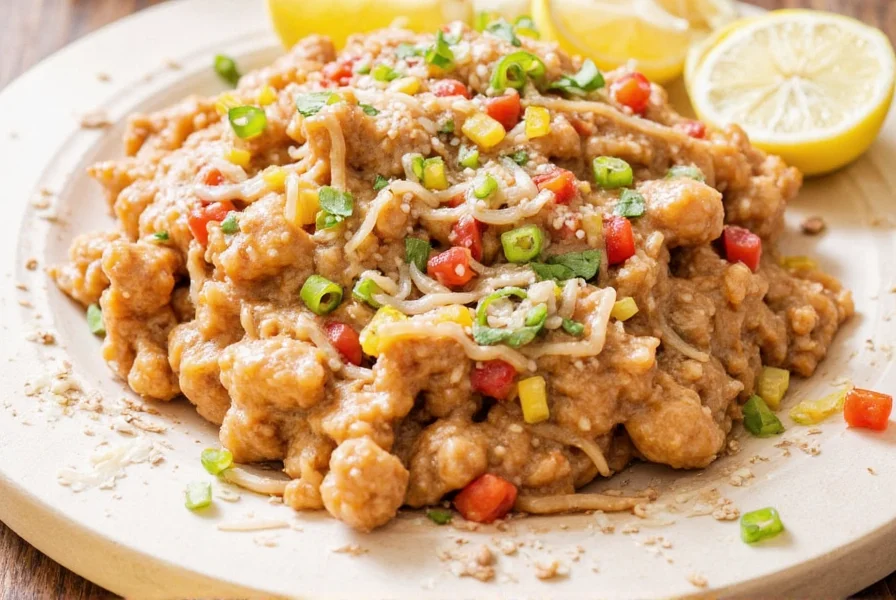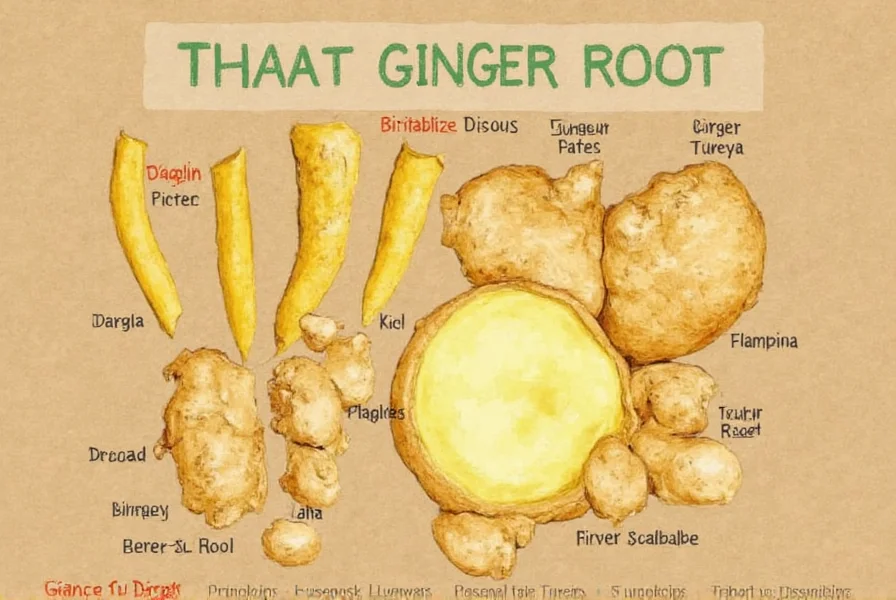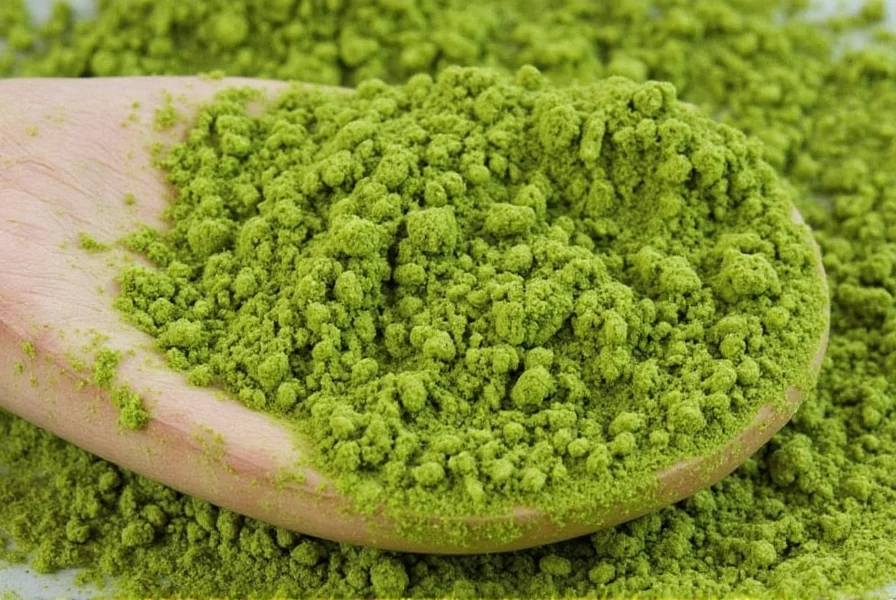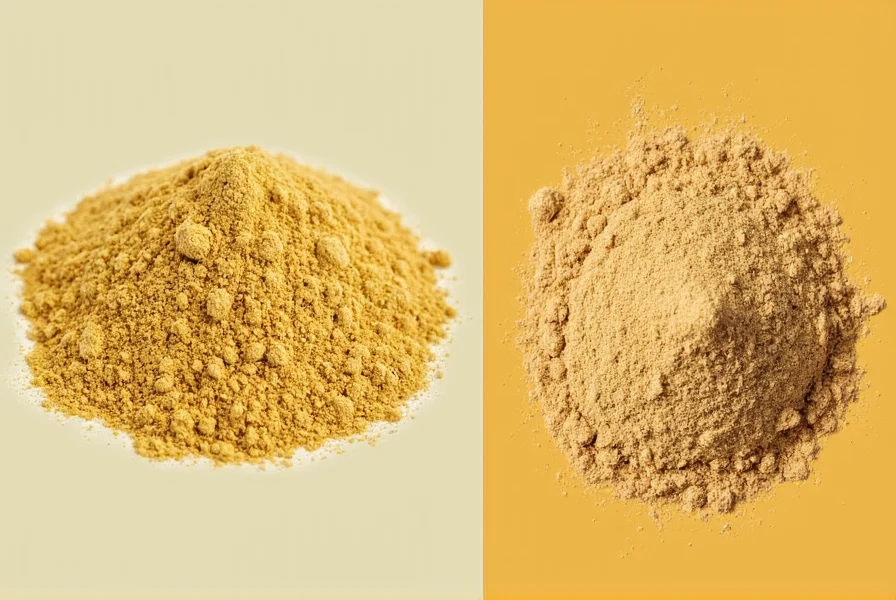Table of Contents
Introduction to Ginger Root
Ginger root has a complex flavor profile that combines spicy, warm, sweet, and earthy notes with a slight citrusy finish. It delivers a warming heat (different from chili peppers) due to compounds like gingerol, balanced by natural sweetness and subtle earthiness. This unique taste makes ginger a versatile spice used in cuisines worldwide.
Whether you're a home cook or a professional chef, understanding ginger's flavor is key to using it effectively in recipes. In this guide, we'll explore everything you need to know about ginger's taste, including how it compares to other spices, how to use it in cooking, and tips for buying the best quality.

Understanding the Flavor Profile
The flavor of ginger root is often described as spicy, warm, and slightly sweet. But there's more to it than just heat. Let's break down the key components of its flavor profile:
- Spiciness: Ginger delivers a sharp, tingling heat that is different from chili peppers. This is due to compounds like gingerol, which give it a warming sensation on the tongue.
- Sweetness: Despite its spiciness, ginger has a natural sweetness that balances out the heat. This makes it a great addition to desserts, teas, and sauces.
- Earthy Notes: Fresh ginger has a subtle earthy undertone that adds depth to its flavor. It's not overpowering but contributes to its overall complexity.
- Citrusy Flicker: Some people detect a faint citrus-like brightness in ginger, especially when it's freshly grated or sliced.
So, to answer the question, what does ginger root taste like? It tastes like a perfect balance of warmth, spice, and a hint of sweetness, with a touch of earthiness and a zesty finish.
Cooking Uses and Tips
Ginger root is a staple in many cuisines around the world, from Asian to Caribbean to Mediterranean. Here are some common ways to use it in cooking, along with tips to get the best out of it:
1. Grating vs. Slicing
Grated ginger is ideal for adding a fine, even heat to dishes like soups, stir-fries, and marinades. Sliced ginger, on the other hand, is better for infusing broths or tea.
2. Cooking Methods
- Stir-frying: Add grated ginger at the beginning of the cooking process to release its oils and aroma.
- Steaming: Use thin slices of ginger in steamed vegetables or fish for a delicate flavor.
- Baking: Ginger pairs well with baked goods like gingerbread, cookies, and cakes. Use ground ginger for convenience or fresh ginger for a bolder flavor.
3. Pairings
Ginger works well with a variety of ingredients, including:
- Garlic: A classic combo in Asian cuisine.
- Wasabi: Adds an extra layer of heat and complexity.
- Lemon or Lime: Balances the spiciness and enhances the citrusy notes in ginger.
- Honey or Maple Syrup: Perfect for sweetening up ginger tea or sauces.
Buying Guide for Ginger Root
If you're looking to buy fresh ginger root, here are some tips to help you choose the best quality:
1. Appearance
Look for firm, plump roots with smooth skin and no soft spots. Avoid any ginger that feels shriveled or has visible mold.
2. Smell
Fresh ginger should have a strong, pungent aroma. If it smells weak or musty, it may be old or not fresh.
3. Texture
Press gently on the root. It should feel solid and not too soft or dry. The texture can affect the intensity of the flavor—firmer ginger tends to be more potent.
4. Storage
To keep ginger fresh, store it in a cool, dark place, such as a paper towel-lined container in the fridge. You can also freeze it for long-term use.
For those who prefer convenience, pre-grated ginger or ginger powder is available. However, fresh ginger offers the most vibrant and complex flavor.

Comparison with Other Spices
Ginger has a unique flavor, but it's often compared to other spices. Here's how it stacks up:
| Spice | Flavor Profile | Heat Level | Common Uses |
|---|---|---|---|
| Ginger | Spicy, sweet, earthy, slightly citrusy | Moderate | Stir-fries, teas, baking, marinades |
| Garlic | Pungent, savory, umami | High | Stews, sauces, roasts, dressings |
| Pepper | Sharp, bitter, spicy | High | Seasoning, meat, cheese, sauces |
| Cardamom | Sweet, floral, citrusy | Low | Baking, chai, desserts, garam masala |
| Mustard | Pungent, sharp, tangy | High | Condiments, dressings, pickles |
As you can see, ginger stands out with its unique blend of heat, sweetness, and earthiness. While it shares some similarities with other spices, its distinct character makes it a favorite among chefs and home cooks alike.

Frequently Asked Questions
What does ginger root taste like?
Ginger root has a complex flavor profile that combines spicy, warm, sweet, and earthy notes with a slight citrusy finish. It delivers a warming heat (different from chili peppers) due to compounds like gingerol, balanced by natural sweetness and subtle earthiness. When freshly grated, it often has a bright, zesty quality that makes it versatile for both savory and sweet applications.
Is ginger more spicy or sweet?
Ginger contains both spicy and sweet elements, but the balance depends on how it's prepared and used. Fresh ginger has an initial spicy "bite" that quickly mellows into sweetness. The heat is warming rather than burning (like chili peppers), and the natural sugars become more pronounced when cooked or used in sweet applications like gingerbread or tea. Many describe it as having a perfect balance between these two qualities.
How does fresh ginger differ from ground ginger in taste?
Fresh ginger has a brighter, more complex flavor with pronounced citrus notes and a sharper heat. Ground ginger is more concentrated and has a warmer, deeper flavor with less of the fresh, zesty quality. Fresh ginger contains higher levels of gingerol (the compound responsible for its heat), while ground ginger contains more zingerone (which develops when ginger is dried), giving it a slightly different, mellower flavor profile.
Why does ginger make your mouth tingle?
The tingling or warming sensation from ginger comes from compounds called gingerols, particularly [6]-gingerol. Unlike capsaicin in chili peppers that triggers heat receptors, gingerols activate different receptors in your mouth that create a unique warming sensation. This is why ginger feels "hot" but doesn't burn like spicy peppers - it's a different physiological response that many find more pleasant and less overwhelming.
Does ginger taste similar to garlic?
No, ginger and garlic have distinctly different flavor profiles. Garlic is pungent, savory, and umami-rich, while ginger is spicy-sweet with citrusy notes. They often complement each other in cooking (particularly in Asian cuisine), but they don't taste similar. Ginger's heat is warming and clean, whereas garlic's pungency is more sulfurous and sharp. When combined, they create a more complex flavor than either provides alone.
Conclusion
In conclusion, ginger root is a powerhouse of flavor that brings warmth, spice, and a touch of sweetness to any dish. So, to answer the question, what does ginger root taste like? It tastes like a harmonious blend of heat, sweetness, and earthiness with a slight citrusy edge. Whether you're using it in a savory stir-fry or a sweet dessert, ginger adds depth and complexity that can't be replicated by other spices.
From understanding its flavor profile to learning how to use it in the kitchen, ginger is a spice worth exploring. With the right techniques and knowledge, you can unlock its full potential and enhance your cooking experience.











 浙公网安备
33010002000092号
浙公网安备
33010002000092号 浙B2-20120091-4
浙B2-20120091-4